
Categories
Muchas Grass-ias
Submitted: Sept. 19, 2025, 9:55 a.m.
The grass isn’t always greener on the other side. Sometimes it’s blue, purple, red, pink, or even striped. Grasses can sometimes fade into the background while other plants are blooming, but warm-season grasses get their chance to shine at the end of summer and into the autumn.
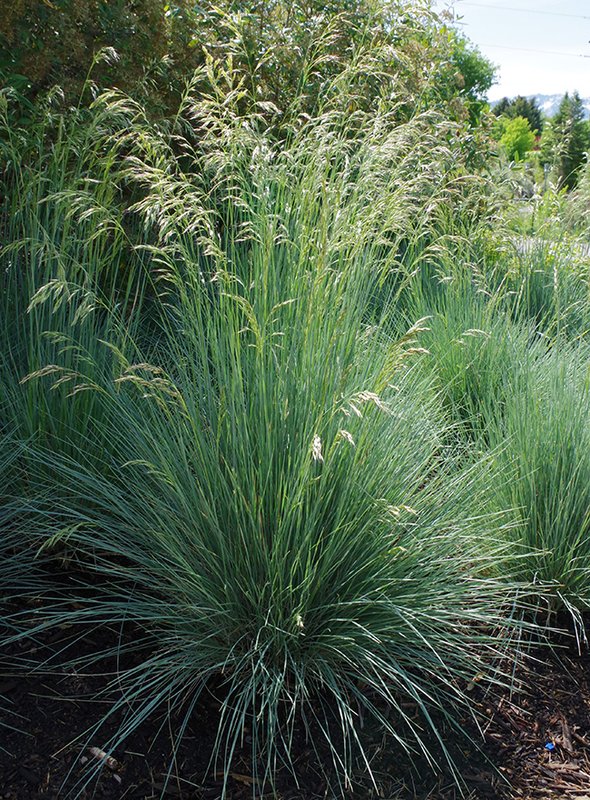
Helictotrichon sempervirens 'Saphirsprudel' (Sapphire Fountain™ Blue Oat Grass)
This eye-catching grass is a fountain of icy blue blades.
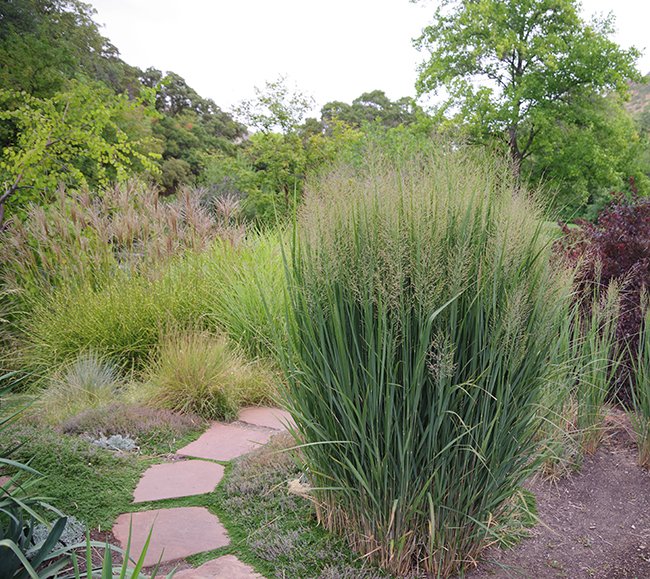
Panicum amarum 'Dewey Blue' (Dewey Blue Switchgrass)
This switchgrass has impressive height already, but its dusty pink flower spikes in late summer make it even taller. Find it in the Water Pavilion, where the Grass Bed showcases the beauty and toughness of ornamental grasses.
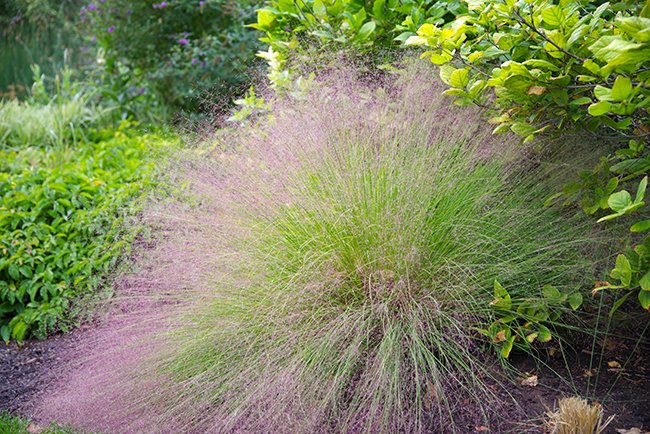
Muhlenbergia reverchonii 'PUND015S' (Undaunted® Ruby Muhly)
The flower spikes create a transparent pink cloud that floats into the fall. It may look delicate, but this hardy grass selection was selected from the High Plains to tolerate both intense heat and biting cold.

Calamagrostis × acutiflora 'Avalanche' (Feather Reed Grass)
These amber waves are a perfect match for purple mountain majesty.

Sporobolus heterolepis (Prairie Dropseed)
This delicate bright green grass produces a cilantro-like scent when in flower.
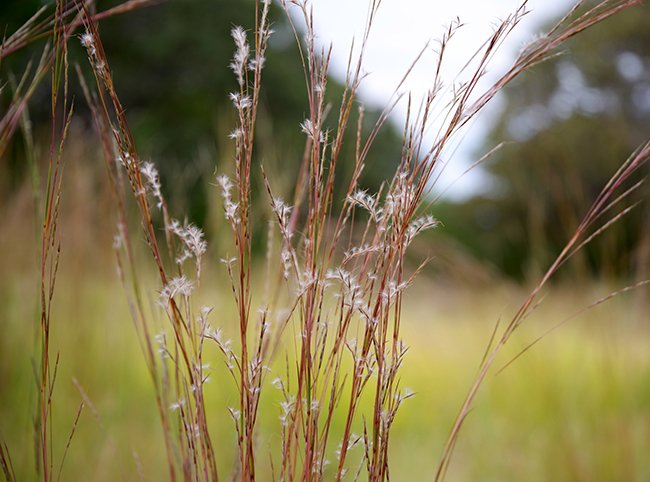
Schizachyrium scoparium (Little Bluestem)
This tough grass is all fluff and no fuss. The feathery flowers catch the light and stand out beautifully against the deep red stalks. Besides its visual appeal, this grass gives caterpillars the habitat and fuel they need to transform into butterflies. It is native to a variety of habitats across North America.
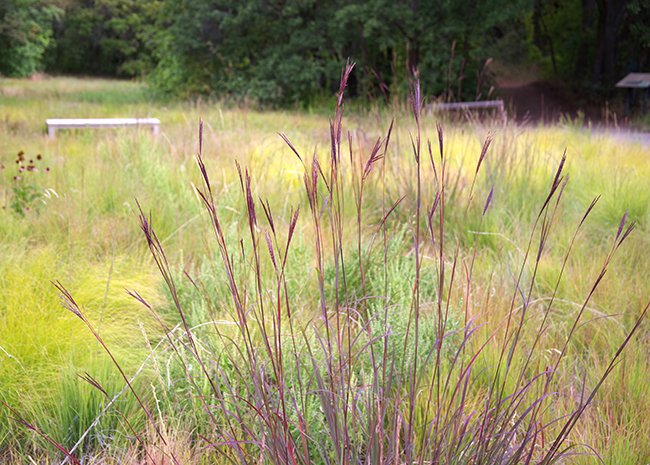
Andropogon gerardi 'Rain Dance' (Rain Dance Big Bluestem)
This beautiful grass brings a rich purple color to the creekside meadow in the Natural Area. While it’s no longer classified as a big brother of the Little Bluestem Grass, it also provides food for caterpillars.
Grasses are more than just fillers in the Garden. Flowers that provide nectar for adult pollinators are important, but butterflies also need somewhere to lay their eggs. Butterflies rely on native grasses to provide food for their larvae. “Pollinator friendly” might suggest brightly colored flowers full of nectar, but grasses are often the nourishment that caterpillars need to become beautiful adult butterflies.
On a breezy day, grasses come alive in the landscape. Take a moment to appreciate their graceful movement and the pleasing sound of grasses rustling in the wind.
Blog by Drew Freshour
Photos by Drew Freshour and Lezlae Grubb